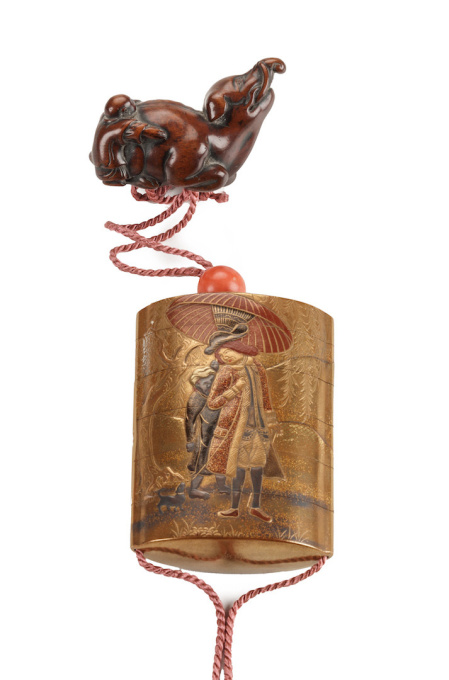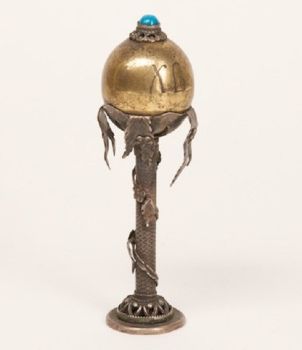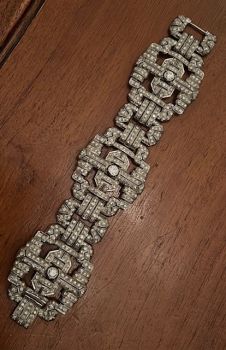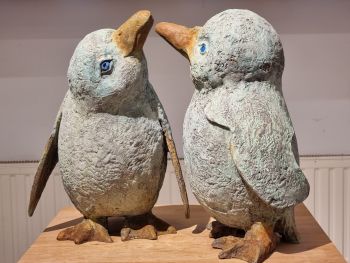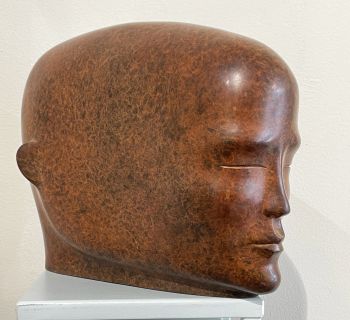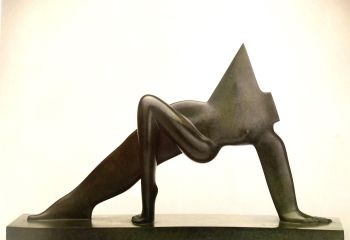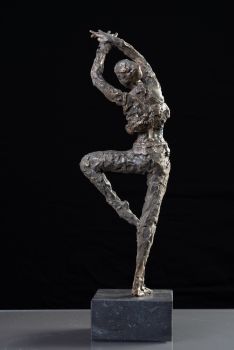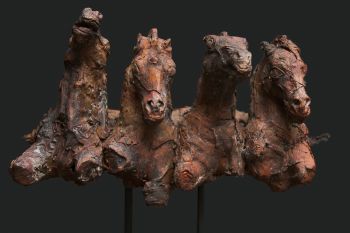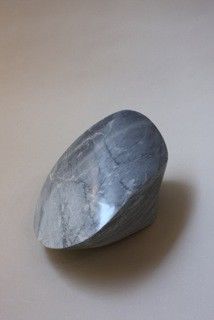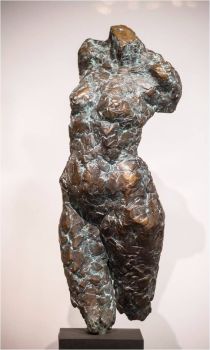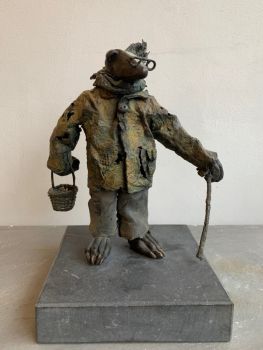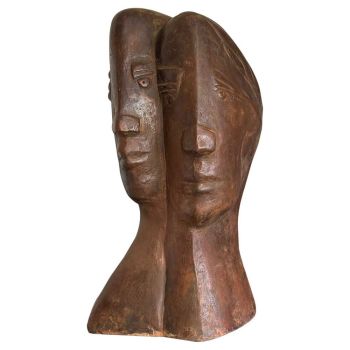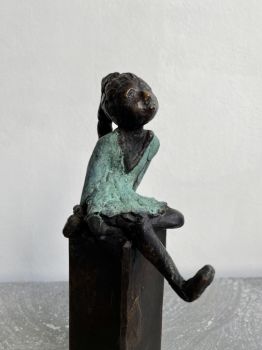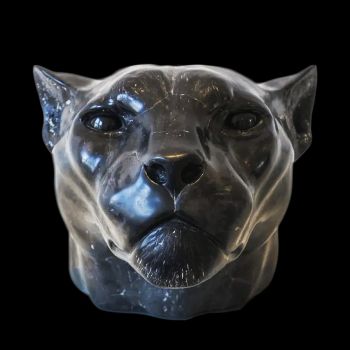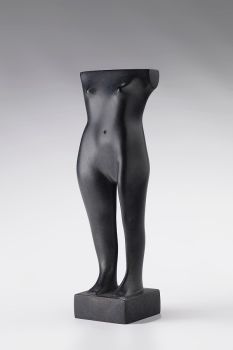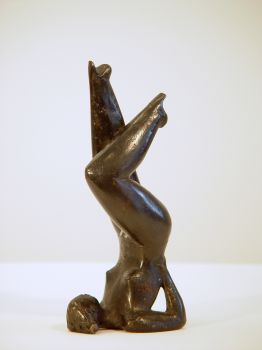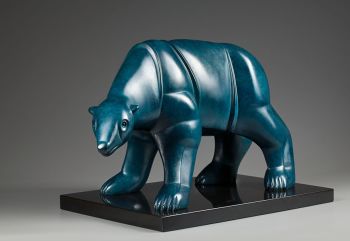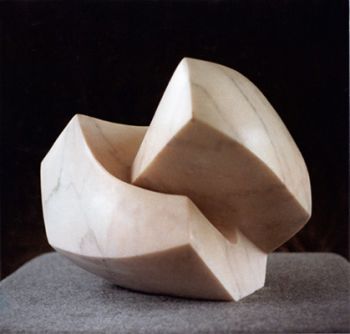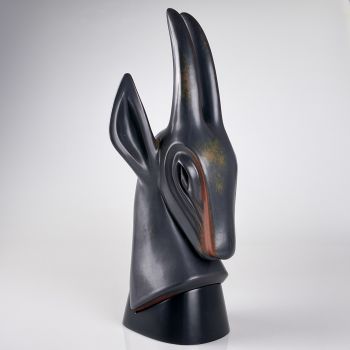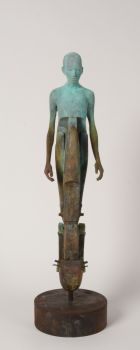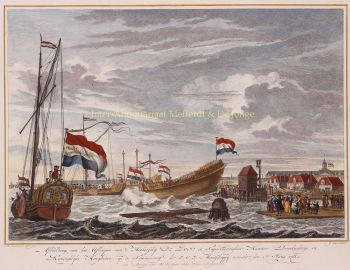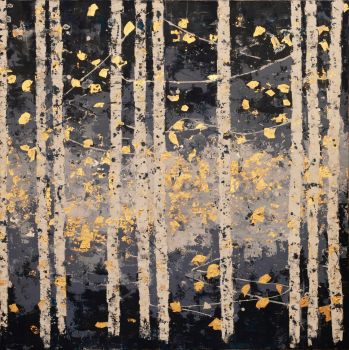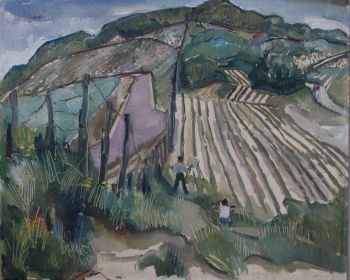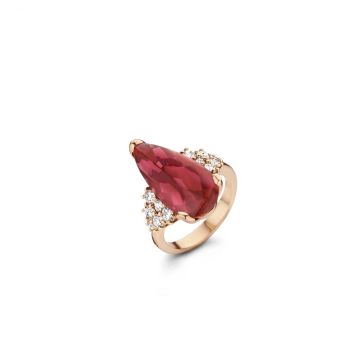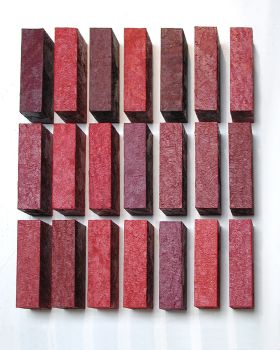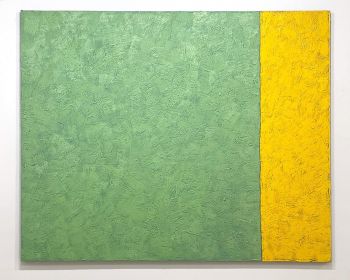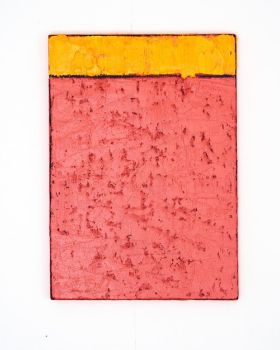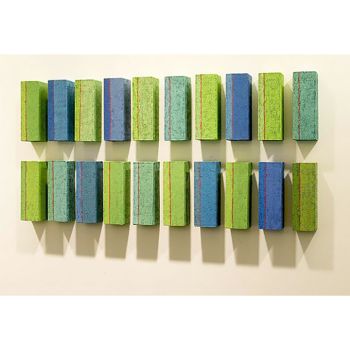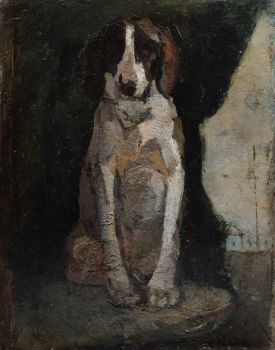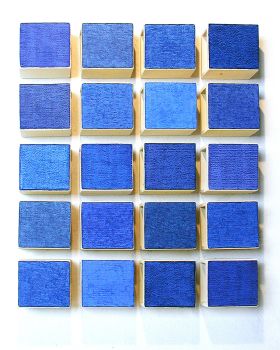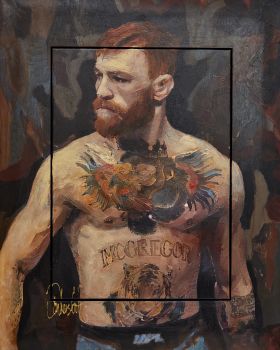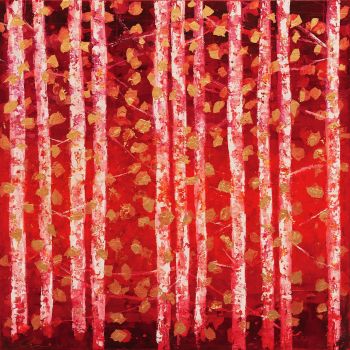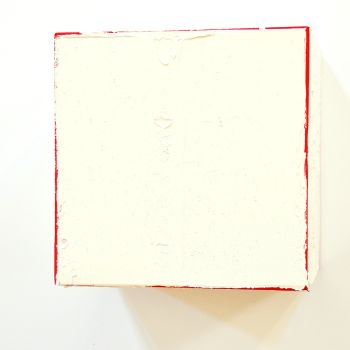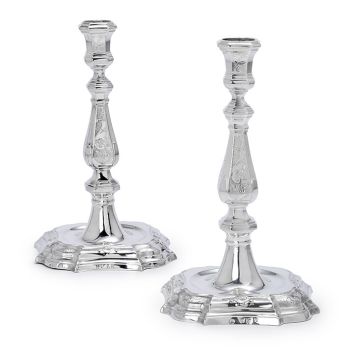Inro late 18th century, netsuke mid 18th century 1850 - 1900
Unknown artist
WoodGoldSilver
Currently unavailable via Gallerease
Zebregs & Röell - Fine Art - Antiques
- About the artworkINRO, OJIME AND BAKU NETSUKE SIGNED KOMA KORYU (DIED BEFORE 1789)
Inro late 18th century, netsuke mid 18th century
Gold lacquered six-compartment inro, decorated in gold and silver hiramaki-e and takamaki-e and with red lacquer, on one side with a Dutchman, his dog and a Javanese servant holding a sunshade, on the other side a Dutch ship with black sails, the inside of the compartments decorated with nashiji, the netsuke, in the form of an elephant and a boy trying to climb onto it, cedarwood.
Inro H. 9 x W. 6.3 cm
Netsuke L. 6 cm
Provenance:
The Frits Philips Collection
Note:
Koryũ family name was Kimura, but this was changed to Koma on his adoption by his brother-in-law Koma KyühakuIII, whose pupil he became. Koma Koryũ was a pivotal figure in the later Koma school, absorbing the skills of his distinguished teacher and passing them on to Kansai I. His pupils also included Omura Gyokuzan and Nomura Kyüho. Koryũ was an inro specialist, but some other artefacts by him are recorded as well.
The decoration of the inro is most likely taken from an early Nagasaki woodblock print of a Dutchman and his servant holding a sunshade, possibly one published by Hariya in the mid 18th century. Since the Dutch, having pockets in their coats and trousers, did not use inro, this inro most likely was not made for export but to satisfy the Japanese fascination for the exotic foreigners. Unlike netsuke of Dutchmen, inro depicting Dutchmen are not common ( for a few examples see A Collection of Nagasaki Colour Prints and Paintings by N.H.N. Mody, plate. 218). The netsuke of the elephant, an animal introduced by the Dutch into Japan, could also be an example of the Japanese fascination with the exotic. - About the artist
It might happen that an artist or maker is unknown.
Some works are not to be determined by whom it is made or it is made by (a group of) craftsmen. Examples are statues from the Ancient Time, furniture, mirroirs, or signatures that are not clear or readible but as well some works are not signed at all.
As well you can find the following description:
•“Attributed to ….” In their opinion probably a work by the artist, at least in part
•“Studio of ….” or “Workshop of” In their opinion a work executed in the studio or workshop of the artist, possibly under his supervision
•“Circle of ….” In their opinion a work of the period of the artist showing his influence, closely associated with the artist but not necessarily his pupil
•“Style of ….” or “Follower of ….” In their opinion a work executed in the artist’s style but not necessarily by a pupil; may be contemporary or nearly contemporary
•“Manner of ….” In their opinion a work in the style of the artist but of a later date
•“After ….” In their opinion a copy (of any date) of a work of the artist
•“Signed…”, “Dated….” or “Inscribed” In their opinion the work has been signed/dated/inscribed by the artist. The addition of a question mark indicates an element of doubt
•"With signature ….”, “With date ….”, “With inscription….” or “Bears signature/date/inscription” in their opinion the signature/ date/ inscription has been added by someone other than the artist
Are you interested in buying this artwork?
Artwork details
Related artworks
Unknown artist
Silver Russian Presentation Easter Egg1880 - 1899
Price on requestH.W.C. Dullaert Art & Antiques Dealer
1 - 4 / 12Unknown artist
A SMALL IVORY NETSUKE OF A DUTCHMAN WITH A DRUM1750 - 1800
Price on requestZebregs & Röell - Fine Art - Antiques
Unknown artist
A JAPANESE SMALL SAWASA 'PEACH-FORM' CRUCIBLE CUPearly 18th
Price on requestZebregs & Röell - Fine Art - Antiques
Unknown artist
A IVORY NETSUKE OF A DUTCHMAN HOLDING A COCKEREL18th century
Price on requestZebregs & Röell - Fine Art - Antiques
Unknown artist
The Stamford Raffles Secretaires.1800 - 1813
Price on requestZebregs & Röell - Fine Art - Antiques
Unknown artist
A MARINE IVORY NETSUKE OF A DUTCHMAN HOLDING A CHINESE FAN18th century
Price on requestZebregs & Röell - Fine Art - Antiques
Unknown artist
AN IVORY NETSUKE OF A DUTCHMAN FROLICKING WITH A SMALL BOY18th century
Price on requestZebregs & Röell - Fine Art - Antiques
Unknown artist
A rare Japanese export lacquer medical instrument box1650 - 1700
Price on requestZebregs & Röell - Fine Art - Antiques
Unknown artist
A RARE LARGE JAPANESE LACQUERED LEATHER TELESCOPE1750 - 1800
Price on requestZebregs & Röell - Fine Art - Antiques
1 - 4 / 20Joris August Verdonkschot
Degas Revisited - In Stock2000 - 2020
Price on requestMorren Galleries Utrecht
1 - 4 / 24Unknown artist
Two study portraits of Mas Marco Kartodikromo 1900 - 1950
Price on requestZebregs & Röell - Fine Art - Antiques
Unknown artist
A JAPANESE MODEL OF A NORIMONO, A PALANQUIN1650 - 1700
Price on requestZebregs & Röell - Fine Art - Antiques
Unknown artist
The bell of the VOC fortress in Jaffna, Sri Lanka1747
Price on requestZebregs & Röell - Fine Art - Antiques
 Curated by
Curated byDanny Bree
Unknown artist
A large Japanese Imari porcelain 'VOC Groningen' dish1800 - 1925
Price on requestZebregs & Röell - Fine Art - Antiques
Unknown artist
A RARE COMPLETE INDIAN SADELI INLAID WORK AND WRITING BOX1800 - 1850
Price on requestZebregs & Röell - Fine Art - Antiques
 Curated by
Curated byDanny Bree
Unknown artist
Dutchmen in Miniature18th century
Price on requestZebregs & Röell - Fine Art - Antiques
Unknown artist
Japanese transition-style lacquer coffer 1640 - 1650
Price on requestZebregs & Röell - Fine Art - Antiques
1 - 4 / 24 Curated by
Curated byDanny Bree
Samuel Dejong
Anatomia Blue Heritage, Atlas Closed2017 - 2019
Price on requestVilla del Arte Galleries
1 - 4 / 24Unknown artist
A SMALL IVORY NETSUKE OF A DUTCHMAN WITH A DRUM1750 - 1800
Price on requestZebregs & Röell - Fine Art - Antiques
Unknown artist
An Indian part-gilt silver-clad ceremonial sceptre or mace with a tiger’s head1850 - 1900
Price on requestZebregs & Röell - Fine Art - Antiques
 Curated by
Curated byDanny Bree
Unknown artist
The Stamford Raffles Secretaires.1800 - 1813
Price on requestZebregs & Röell - Fine Art - Antiques
Unknown artist
A COLLECTION OF FOUR SRI LANKAN IVORY BIBLE BOXES18th century
Price on requestZebregs & Röell - Fine Art - Antiques
Unknown artist
A RARE COMPLETE INDIAN SADELI INLAID WORK AND WRITING BOX1800 - 1850
Price on requestZebregs & Röell - Fine Art - Antiques
Engelbert Kaempfer
ENGELBERT KAEMPFER BOOK1651 - 1716
Price on requestZebregs & Röell - Fine Art - Antiques
Dutch School
Arrival of a Dutch East Indiaman in the Table Bay18th century
Price on requestZebregs & Röell - Fine Art - Antiques
1 - 4 / 12

